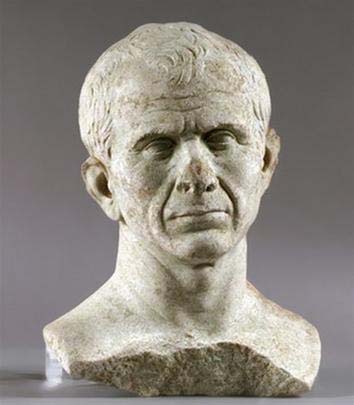Play Caesar's rare phenomenon
A bust is said to have carved the portrait of Julius Caesar the archaeologists found at the bottom of the Rhone River, in southern France.

The statue of Julius Caesar has just been found.
The statue of a diamond is the size of a real person, depicting a wrinkled face and bald head, apparently Julius Caesar in the later years of his life.
Archaeologists say the statue dates back between 49 and 46 BC - the time when Caesar found a residential area in Arles, then turned this place into a base against the enemy, Pompey.
According to scientists, this is the oldest sculpture of the Roman emperor. Most of the famous ancient works of Caesar were created after his death.
In addition to the Caesar statue, divers also find a collection of artifacts near the town of Arles, including a 1.8-meter-tall marble statue of the Sea god dating to about the beginning of the century 3rd AD There are also two smaller bronze statues, 70 cm high, including a statue of the Forest God.
Now researchers are investigating why the statues are located on the riverbed. According to the original hypotheses, they may have been thrown into the river after the Emperor Caesar was assassinated.
Julius Caesar (SN 13-7-100 BCE, 15-3-44 BC) was a Roman military and political leader and one of the most influential people in world history. He played a key role in the conversion of the Roman Republic into the Roman Empire. His conquest of Gaule (including France, Northern Italy, Belgium, and West Switzerland . today) opened the Roman road to the Atlantic. He also launched the first Roman invasion of Britannia (modern England) in 55 BC.
Caesar is considered one of the most prominent military, politicians and one of the greatest leaders of world history in ancient Rome. In 42 BC, two years after Caesar was murdered, the Roman Senate was officially sanctified, considering him to be one of the gods of Rome. (*)
(*) Wikipedia
- The truth about the phenomenon of
- A close-up of a rare moment when divers play with
- Strange, rare ice halo in the United States
- 'Dragon ice dragon' - super rare natural phenomenon appears in Antarctica after 10 years of disappearance
- Rare phenomenon: Thousands of
- Explaining the phenomenon of 'ice hair' fantasy is extremely rare when the temperature drops deeply
- Sunset phenomenon Manhattanhenge in New York
- The phenomenon of rare tidal waves appears in Japan
- South Africans are busy catching the rare snow
- White rainbow appears in Scotland
- Anxiety about an unusual sun
- Snow rolled itself into a tube
 Discovered an ancient centipede fossil 99 million years old
Discovered an ancient centipede fossil 99 million years old Discovered bat-like dinosaurs in China
Discovered bat-like dinosaurs in China Discovered a 200-year-old bronze cannon of the coast
Discovered a 200-year-old bronze cannon of the coast Discover 305 million-year-old spider fossils
Discover 305 million-year-old spider fossils